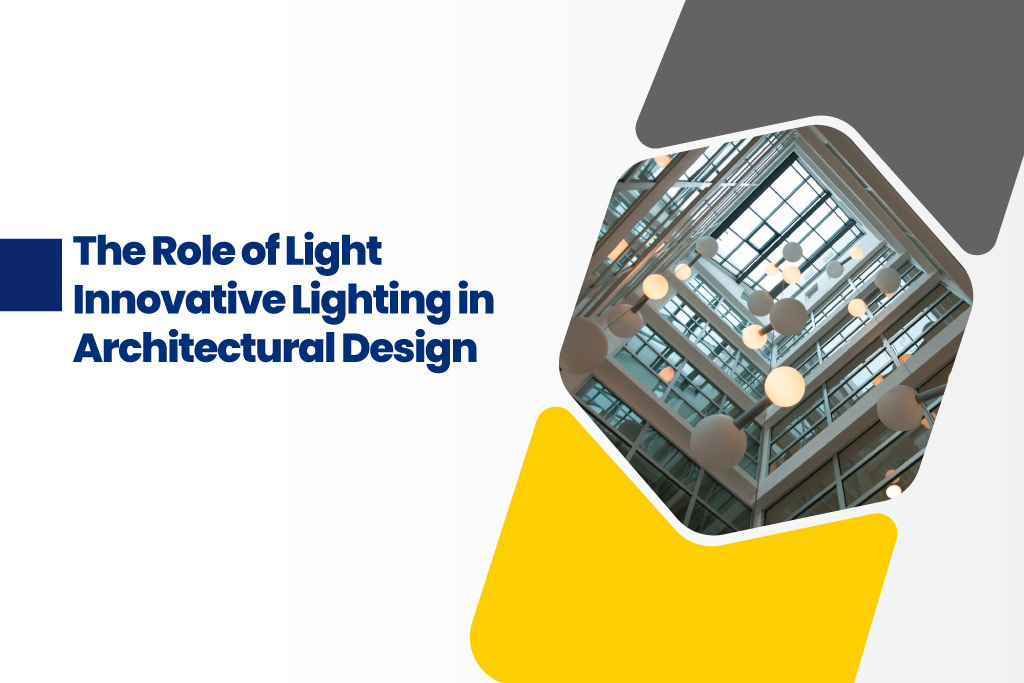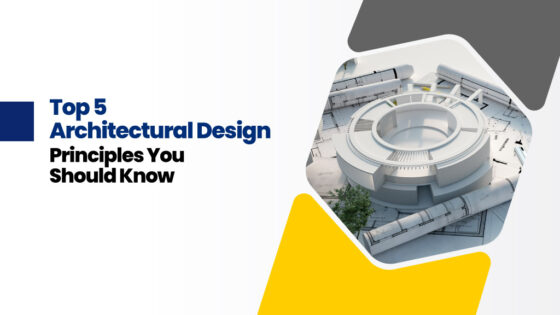Lighting plays a crucial role in architectural design, influencing the aesthetic, functionality, and mood of a space. Innovative lighting techniques can transform ordinary buildings into extraordinary works of art. This blog explores the role of light in architectural design, highlighting innovative approaches and the contributions of educational institutions like Karpagam Architecture. As one of the leading architecture colleges in Coimbatore, Karpagam Architecture is at the forefront of integrating cutting-edge lighting solutions into its curriculum.
The Fundamentals of Lighting in Architecture
Natural vs. Artificial Lighting
Lighting in architecture can be divided into natural and artificial sources. Natural lighting, provided by sunlight, is essential for creating healthy, inviting spaces. It reduces the need for artificial lighting, saving energy and enhancing well-being. Artificial lighting, on the other hand, allows for greater control and creativity in illuminating spaces, particularly when natural light is insufficient.
Key Principles of Effective Lighting Design
Effective lighting design is based on principles such as balance, contrast, and functionality. Balance ensures that light is evenly distributed throughout a space, while contrast creates focal points and highlights architectural features. Functionality ensures that lighting meets the practical needs of the occupants, such as task lighting for workspaces or ambient lighting for relaxation areas.
Innovative Lighting Techniques
LED Technology and Energy-Efficient Lighting
LED technology has revolutionized architectural lighting by offering energy efficiency, longevity, and versatility. LEDs consume less power and produce less heat than traditional lighting, making them ideal for sustainable design. Their compact size allows for creative applications, from accent lighting to large-scale installations.
Dynamic Lighting and Smart Controls
Dynamic lighting systems and smart controls enable architects to create adaptable environments that respond to changing needs and conditions. These systems can adjust lighting levels, colors, and patterns automatically, enhancing the user experience and energy efficiency. Smart lighting can be controlled via mobile devices, adding convenience and flexibility.
Use of Color and Texture in Lighting
The use of color and texture in lighting adds depth and character to architectural designs. Colored lighting can evoke different emotions and set the mood of a space, while textured lighting can create patterns and visual interest. Combining these elements allows architects to experiment and push the boundaries of conventional lighting design.
Enhancing Spaces with Light
Creating Ambiance and Mood
Lighting is a powerful tool for creating ambiance and setting the mood in a space. Soft, warm lighting can create a cozy, inviting atmosphere, while bright, cool lighting can energize and invigorate. By adjusting the intensity and color of light, architects can influence how a space feels and functions.
Highlighting Architectural Features
Innovative lighting can highlight architectural features, drawing attention to unique design elements. Techniques such as uplighting, downlighting, and spotlighting can accentuate textures, shapes, and details, adding drama and sophistication to the architecture.
Enhancing Functionality and Safety
Proper lighting enhances the functionality and safety of a space. Task lighting ensures that work areas are well-lit, reducing eye strain and increasing productivity. Pathway and emergency lighting improve safety by guiding occupants and providing illumination during power outages.
Case Studies of Innovative Lighting in Architecture
Notable Examples from Around the World
Several buildings around the world showcase innovative lighting designs. The Louvre Pyramid in Paris uses LED lighting to highlight its glass structure, creating a stunning nighttime visual. The Harpa Concert Hall in Reykjavik features a dynamic facade that changes colors, adding vibrancy and character to the building.
Analysis of Successful Lighting Designs
Successful lighting designs often combine multiple techniques and technologies to achieve their effects. For example, the Sagrada Familia in Barcelona uses natural light to create a divine ambiance, while the Burj Khalifa in Dubai employs LED lighting to illuminate its towering structure, creating a beacon in the skyline.
The Role of Education in Lighting Design
Importance of Specialized Education
Specialized education in lighting design is crucial for developing the skills and knowledge needed to implement innovative lighting solutions. Courses and programs that focus on lighting design prepare students to tackle the complexities and challenges of modern architecture.
Programs Offered by B Des Colleges in Coimbatore
B Des colleges in Coimbatore offer programs that include lighting design as part of their curriculum. These programs provide students with a strong foundation in design principles, technical skills, and practical experience.
Interior Design Colleges in Tamilnadu and Their Contributions
Interior design colleges in Tamilnadu contribute to the field by training students in the art and science of lighting design. These institutions emphasize the importance of lighting in creating functional and aesthetically pleasing interiors.
Architecture Colleges in Coimbatore Focusing on Lighting Design
Architecture colleges in Coimbatore, such as Karpagam Architecture, integrate lighting design into their programs. These colleges provide students with hands-on experience and access to the latest technologies, preparing them to become leaders in the field.
How Karpagam Architecture Incorporates Innovative Lighting
Curriculum and Hands-On Training in Lighting Design
Karpagam Architecture offers a comprehensive curriculum that includes courses on lighting design. Students gain hands-on training through projects, workshops, and internships, allowing them to apply their knowledge in real-world settings.
Student Projects and Research in Innovative Lighting
Students at Karpagam Architecture engage in projects and research that explore innovative lighting solutions. These projects often involve collaboration with industry experts and provide valuable insights into the latest trends and technologies.
Collaborations with Industry Experts and Firms
Karpagam Architecture collaborates with leading firms and experts in the field of lighting design. These partnerships provide students with opportunities to learn from professionals, participate in cutting-edge projects, and gain practical experience.
Future Trends in Lighting Design
Emerging Technologies and Materials
Future trends in lighting design include the use of emerging technologies and materials. Innovations such as OLED lighting, laser lighting, and bioluminescent materials offer new possibilities for creative and sustainable design.
Sustainability and Eco-Friendly Lighting Solutions
Sustainability is a key consideration in modern lighting design. Eco-friendly solutions such as solar-powered lighting, low-energy LEDs, and recyclable materials are becoming increasingly important in reducing the environmental impact of buildings.
Predictions for the Future of Lighting in Architecture
The future of lighting in architecture will likely see continued advancements in smart lighting systems, interactive lighting, and human-centric lighting. Architects will use these technologies to create more responsive, adaptive, and sustainable environments.
Conclusion
Lighting is a fundamental element of architectural design that influences the aesthetic, functionality, and mood of a space. Innovative lighting techniques can transform ordinary buildings into extraordinary works of art. Educational institutions like Karpagam Architecture play a crucial role in training the next generation of architects and designers to leverage these techniques effectively. By embracing innovative lighting solutions, architects can create spaces that are not only beautiful but also functional and sustainable. Join Karpagam Architecture, one of the leading architecture colleges in Coimbatore, to embark on an educational journey that empowers you to harness the power of light in architectural design.






